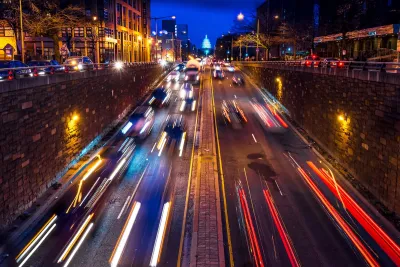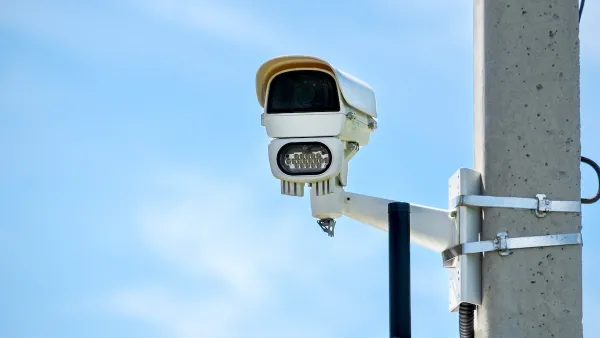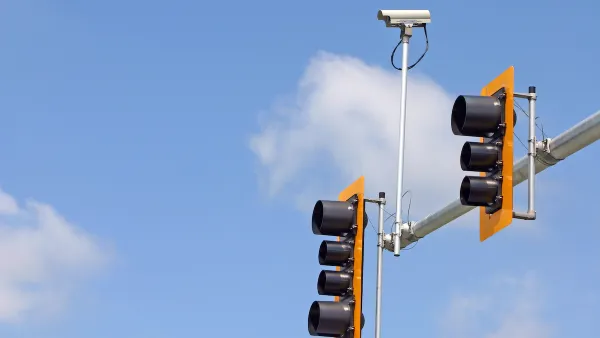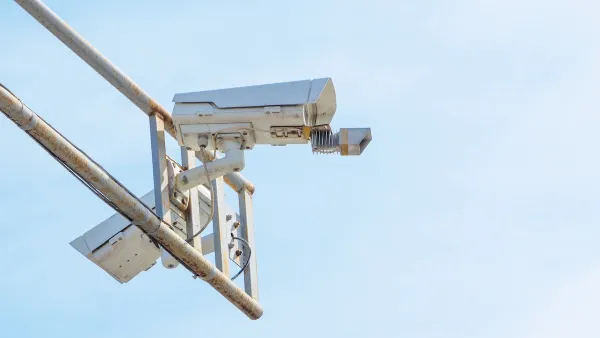Automated enforcement is reducing speeding, but bigger changes to street design and the built environment are needed to make the District’s streets safer and more pleasant for people walking.

In a deep dive in Greater Greater Washington, Pete Rodrigue describes how the Washington, D.C. District Department of Transportation is using automated traffic enforcement to improve road safety and reduce interactions with police. The District recently doubled the number of cameras on the streets in the last year, leading to a large increase in tickets issued between 2022 and 2024, with the District issuing over 250,000 tickets in May 2024.
Rodrigue includes data about how many tickets actually get paid, noting that ticket revenue fell sharply during the Covid-19 pandemic and has not returned to pre-pandemic levels. “This appears to be due to the fact that each camera has been resulting in less revenue because of drivers’ nonpayment,” Rodrigue adds.
As to the question of whether cameras are effective, data shows that cameras tend to issue fewer tickets over time, signaling that drivers who get used to seeing them are less likely to speed. Notably, “studies find that cameras reduce total crashes by roughly 20%, at least in the area around the camera. Traffic cameras may also lower pedestrian injuries, although fewer studies estimate this directly, and some research has found mixed results.”
Rodrigue also highlights the ways that cameras can’t fix our broken built environment: while they might discourage drivers from speeding, they don’t make roads with poor pedestrian infrastructure safer or more pleasant to walk on. And while cars might be moving more slowly, they can still injure or kill pedestrians, even when driving the speed limit. “There’s actually some evidence that the people who speed a little bit on badly designed roads may cause more pedestrian deaths than the small number of people who drive significantly over the limit.”
Ultimately, automated enforcement can still perpetuate inequities baked into our transportation planning. They are just one tool of many needed to improve U.S. road design to limit pedestrian injuries and deaths and make roads safer for everyone who uses them. As Rodrigue points out, “cameras alone will not refashion badly designed stroads into more humane, livable streets. They will not prevent the many crashes that occur within posted speed limits. And without a thoughtful approach, which the District has yet to develop, automated traffic enforcement risks punishing Black and low-income drivers for the sins of traffic engineers.”
FULL STORY: Smile, you’re on camera: A deep dive on automated traffic enforcement data

Analysis: Cybertruck Fatality Rate Far Exceeds That of Ford Pinto
The Tesla Cybertruck was recalled seven times last year.

National Parks Layoffs Will Cause Communities to Lose Billions
Thousands of essential park workers were laid off this week, just before the busy spring break season.

Retro-silient?: America’s First “Eco-burb,” The Woodlands Turns 50
A master-planned community north of Houston offers lessons on green infrastructure and resilient design, but falls short of its founder’s lofty affordability and walkability goals.

Test News Post 1
This is a summary

Analysis: Cybertruck Fatality Rate Far Exceeds That of Ford Pinto
The Tesla Cybertruck was recalled seven times last year.

Test News Headline 46
Test for the image on the front page.
Urban Design for Planners 1: Software Tools
This six-course series explores essential urban design concepts using open source software and equips planners with the tools they need to participate fully in the urban design process.
Planning for Universal Design
Learn the tools for implementing Universal Design in planning regulations.
EMC Planning Group, Inc.
Planetizen
Planetizen
Mpact (formerly Rail~Volution)
Great Falls Development Authority, Inc.
HUDs Office of Policy Development and Research
NYU Wagner Graduate School of Public Service




























